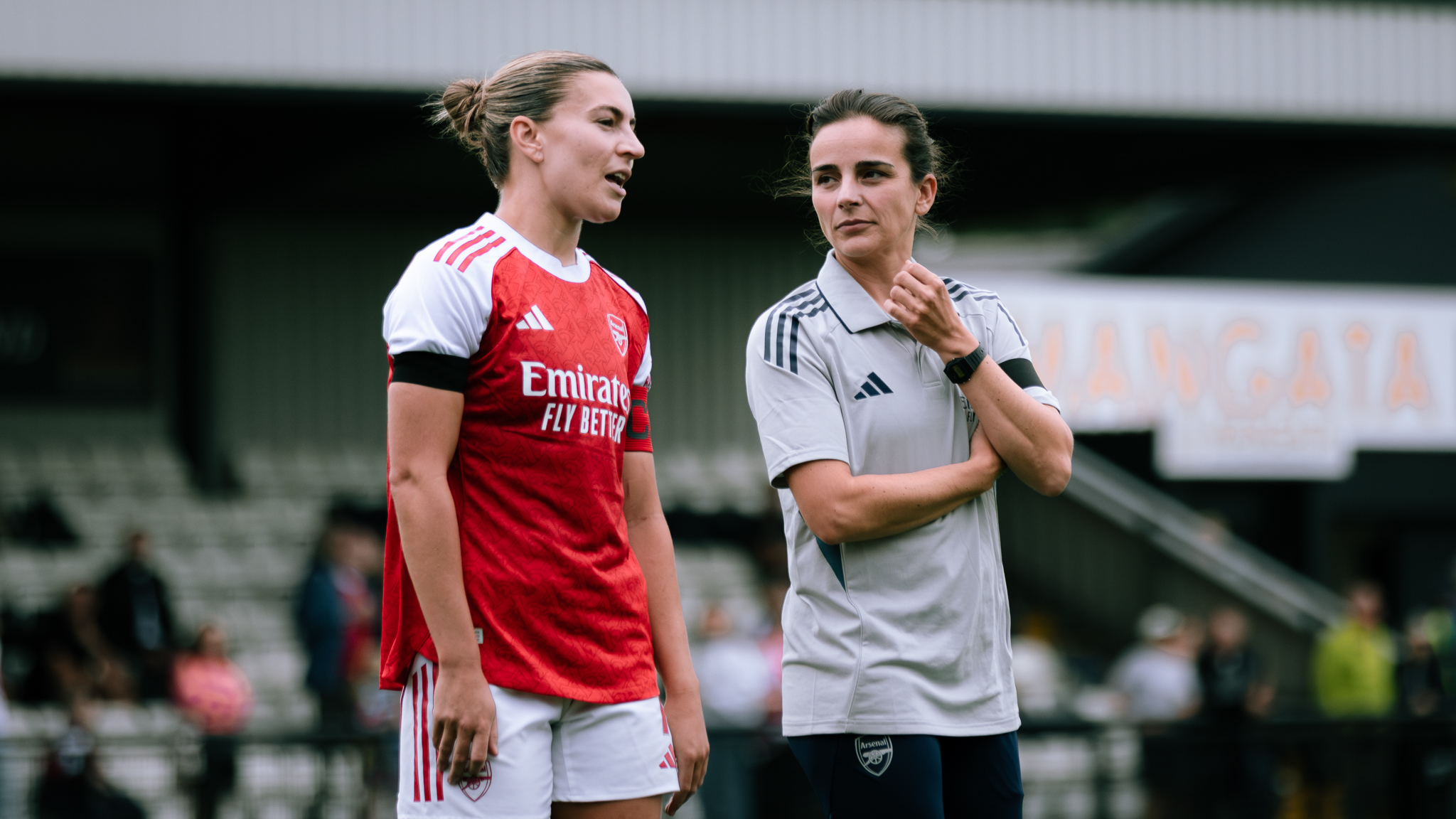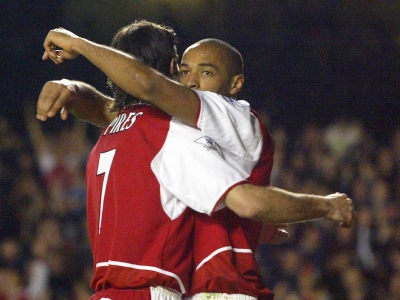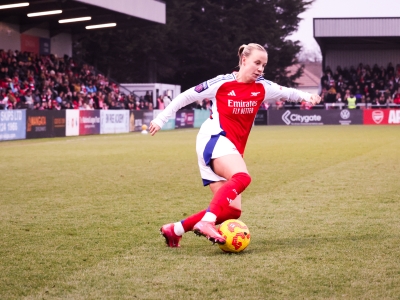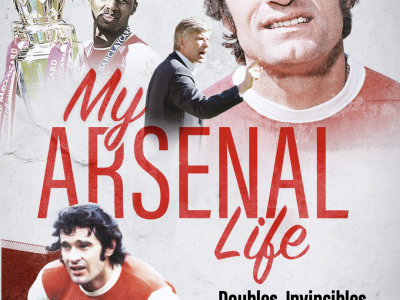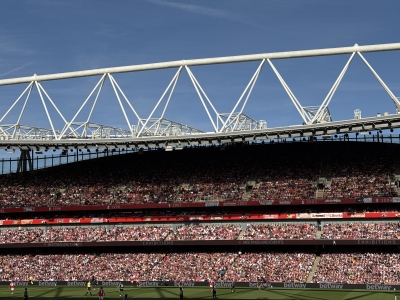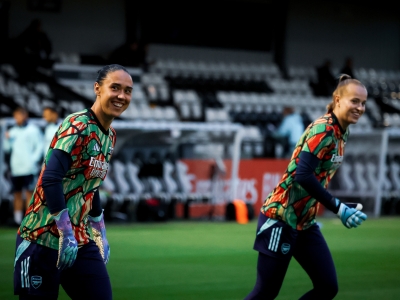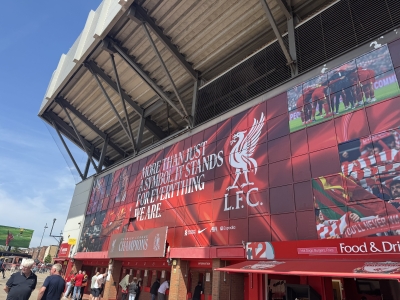Introduction:
Defence is often where a team’s identity is most tested.
How a side protects its goal, builds from the back, and adapts under pressure reveals not just individual quality, but the cohesion and tactical intelligence of the squad.
Under Renee Slegers, Arsenal’s back line has been a mixture of experience, versatility, and emerging talent — and understanding how these elements interact is key to predicting the team’s performance in this upcoming season.
This piece is the second in a series that will break down each unit of Renee Slegers’ Arsenal. If you missed my previous piece on the midfield conundrum, you can view it on our website.
In this analysis, I’ll cover player roles, tactical patterns, injuries, and what last season’s defensive combinations reveal about how Slegers likes to set up her back line. We’ll also look ahead to potential rotation, competition for places, and which players might be key to maintaining consistency across a long and challenging season.
The Defence under Slegers
When you break down Arsenal’s defensive line-ups under Renee Slegers last season, a clear hierarchy emerges — not just in who starts, but in how results, goals conceded, and composure shift depending on personnel.
1. The First-Choice Five: Van Domselaar – Fox – Williamson – Catley – McCabe
Played 16 times
Record: 12 wins, 2 draws, 2 losses
Goals for: 47 (≈ 2.9 per game)
Goals against: 13 (≈ 0.8 per game)Notable results: Beat Barcelona in Champions League final, thrashed Lyon away, contained Madrid, kept Spurs/Liverpool scoreless multiple times.
Takeaway: This wasn’t just “the preferred five” — it was the winning five. The defensive output was elite in both domestic and continental contexts. When this group started, Arsenal averaged nearly 3 goals scored per game while conceding under 1.
It’s no coincidence Slegers leaned on this unit in decisive fixtures.
2. Keeper Swap: Zinsberger – Fox – Williamson – Catley – McCabe
Played 7 times
Record: 5 wins, 0 draws, 2 losses
Goals for: 22 (≈ 3.1 per game)
Goals against: 12 (≈ 1.7 per game)
Notable results: Won 4-3 vs United, scored freely vs Leicester/Brighton, but lost vs Lyon and Madrid.
Takeaway: The outfield four were the same, but the defensive numbers shifted. Arsenal still scored plenty, but conceded more than double compared to the Van Domselaar version. It suggests Slegers viewed DVD as the calmer choice for high-stakes control, while Zinsberger’s games skewed more chaotic.
3. No Williamson (makeshift CB pairings)
Reid + Wubben-Moy + Catley + McCabe (+Zinsberger)
3 matches, including the 5-2 loss to Villa
Record: 2 wins, 1 lossGF: 10, GA: 7
Reid + Codina + Wubben-Moy + Catley (+Zinsberger)
1 match (Bristol FA Cup, won 5-0)
Fox + Williamson + Wubben-Moy + Catley (+DVD)
2 matches (split: lost to City LC, won vs City WSL)
Fox + Williamson + Codina + McCabe (+DVD)
1 match (Valerenga, won 4-1)
Fox + Catley + Codina + McCabe (+DVD)
1 match (West Ham, won 2-0)
Takeaway: Without Williamson, the numbers wobble. The Villa collapse stands out with five conceded. Even when winning, Arsenal often looked more vulnerable defensively (conceded in 3/4 non-Williamson league fixtures).
The structure held against weaker opposition but cracked under pressure.
4. Rotation Depth (Codina, Wubben-Moy, Reid, Nighswonger)
These lineups were mostly cup or group-stage games (London City, Valerenga, Brighton LC).Results were good (clean sheets, 2-0, 3-1, 4-0 wins) but almost entirely against lower-tier opposition.None of these combinations were trusted in knockout or top WSL fixtures.
Takeaway: Depth players kept standards vs lower opposition, but the lack of trust in them for decisive games suggests Slegers sees them as rotation, not challengers.
5. Keeper Usage Patterns
DVD’s back five: featured in all knockout Champions League games, the Champions League final, and the biggest WSL wins. In 11 of the 16 matches played by that defensive combination, Arsenal conceded either zero or one goal.
Zinsberger’s back five: used mainly in rotation and higher-scoring league games, let in more than one goal in 4 of the 7 matches they played.
Takeaway: Slegers’ selection clearly shows her hierarchy: DVD = first choice in elite fixtures, Zinsberger = rotation or injury coverage.
Overall Patterns:
When the first-choice five played Arsenal looked like one of Europe’s best: strong defensive numbers and major wins.
When Williamson was absent defensive fragility spiked, even if results were often still positive.
Keeper choice mattered - DVD correlated with control.
Rotation defenders - Good enough for depth games, not yet trusted for the elite stage.
Player Profiles in System Context
Goalkeepers:
Daphne Van Domselaar – Number One
System Fit: Arsenal’s undisputed first-choice keeper. Brings calmness and composure to the back line, directly influencing defensive stability. Excels playing out from the back, fitting seamlessly into Slegers’ possession-based system.
Stats (24-25 WSL): 15 matches, 10 goals conceded, 81% save rate, 66.7% clean sheet percentage, 91.2% pass completion, 11 wins (≈ 73% win rate)
Comparison:
Hannah Hampton – 22 matches, 13 goals conceded (≈ 0.59 per game), 79% save rate, 59.1% clean sheet percentage, 85.7% pass completion, 19 wins (≈ 86% win rate)
Phallon Tullis-Joyce – 22 matches, 16 goals conceded (≈ 0.73 per game), 83.1% save rate, 59.1% clean sheet percentage, 68.3% pass completion, 13 wins (≈ 59% win rate)
DVD’s defensive record per game is very strong, conceding fewer goals than Tullis-Joyce and only slightly more than Hampton despite fewer appearances.
Clean sheet percentage favours DVD, suggesting her presence stabilises the back line.
Pass completion (91.2%) shows superior distribution and calmness under pressure compared with both Hampton and Tullis-Joyce.
Strengths: Shot-stopping, composure under pressure, distribution, leadership.Areas to Monitor: Injury concerns are the only question mark; retention is crucial for continuity.
Manu Zinsberger – Experienced Backup
System Fit: Senior squad member, influential in the dressing room, capable of performing under pressure.
Stats (24-25 WSL): 7 matches, 16 goals conceded, 51.6% save rate, 14.3% clean sheet percentage, 86.5% pass completion, 4 wins.
Strengths: Experience, leadership, reliability in selected matches.
Areas to Monitor: Inconsistent performances last season; competition could raise standards.
Anneke Borbe – Developing Talent
System Fit: New to Arsenal; needs time to adapt to the build-up style and defensive communication.
Strengths: Ambition, technical skill, willingness to challenge hierarchy.
Areas to Monitor: Tactical understanding, confidence, adaptation to WSL demands.
Centre Backs:
Leah Williamson – First Choice
System Fit: Core of the defence, capable of stepping into midfield to deliver progressive passes. Partnership with Catley is central to Slegers’ defensive stability.
Strengths: Composure, positional intelligence, ball-playing ability, leadership.
Areas to Monitor: Depth is essential for periods without her
Steph Catley – First Choice
System Fit: Transitioned from full-back to centre-back. Combines defensive awareness, positioning, and passing range. Brings versatility from her full-back experience, allowing tactical flexibility.
Strengths: Game reading, composure, passing, leadership. Reliable in high-stakes games and defensive organisation.
Areas to Monitor: Long-term adaptation to CB against fast attackers; performs best alongside a strong partner (Williamson/Wubben-Moy).
Lotte Wubben-Moy – Deputy / Rotational Option
System Fit: Can step into Williamson’s role in her absence; reads the game well, contributes to set pieces, and maintains passing rhythm.
Strengths: Anticipation, intercepting passes, aerial presence, build-up contribution.
Areas to Monitor: Requires consistent minutes for sharpness; partnership chemistry with backline is key.
Laia Codina – Rotational Option / Squad Depth
System Fit: Progressive centre-back, fits Arsenal’s build-up-focused system.
Strengths: Passing range, defensive awareness, breaking lines.
Areas to Monitor: Recovery speed, complacency in possession, injury management.
Katie Reid – Developing Option / Squad Depth
System Fit: Calm, tactically aware, versatile across CB and full-back position.
Strengths: Composure, decision-making, adaptability.
Areas to Monitor: Experience in top-level WSL games; gradual integration needed.
Full Backs:
Emily Fox – Right-Back
System Fit: Defensive solidity with intelligent forward runs; overlaps with wingers to create overloads. Supports build-up, particularly when full-backs drop into midfield.
Strengths: Defensive reliability, tactical awareness, attacking support, strong passing.
Areas to Monitor: Vulnerable when midfield balance shifts; otherwise core starter.
Katie McCabe – Left-Back
System Fit: Versatile, contributing both defensively and offensively. Supports overlapping runs and midfield transitions.
Strengths: Consistency, attacking threat, positional adaptability.
Areas to Monitor: Could face competition from Hinds or Nighswonger in rotation-heavy periods.
Jenna Nighswonger – Rotational Left-Back / Left Wing-Back
System Fit: Can play left-back, wing-back, or midfield support; supports overlapping runs and set-piece delivery.Strengths: Technical skill, offensive contribution, versatility.Areas to Monitor: Defensive refinement needed.
Taylor Hinds – Squad Depth / Flexible Left-Sided Option
System Fit: Left-back or wing-back, occasionally midfield; adds stamina, tactical flexibility, and leadership.
Strengths: Positional flexibility, defensive timing, work rate, goal threat.
Areas to Monitor: Integration into high-pressure matches; depth role.
Recruitment Considerations
Arsenal’s defensive squad is largely stable, but a few points merit attention:
Centre-Backs:
The first choice pairing of Williamson–Catley is strong, but overall depth depends on individual performances this season. With Williamson potentially missing the start of the season, Wubben-Moy has an opportunity to impress and stake a claim. Her performances will influence whether Arsenal consider reinforcement in January or next summer.Codina and Reid remain rotational options, providing cover and flexibility.
Full-Backs:
Emily Fox and Katie McCabe likely to remain initial starters. Taylor Hinds and Jenna Nighswonger can provide rotation and internal competition, though unseating the established pair would require exceptional form. Future needs depend on contracts, departures, or dips in performance.
Goalkeepers:
Daphne Van Domselaar is firmly No.1.Zinsberger provides experienced backup but will face competition from Borbe, who could challenge for the number two spot if she adapts to the WSL.
Summary:
Recruitment is less about urgent signings and more about retention, performance monitoring, and strategic flexibility. Centre-back depth may require attention depending on Wubben-Moy and other backups’ performances early in the season, while full-back and goalkeeper situations are shaped by contracts and competition.
Looking Ahead: Who Plays This Season?
Centre-Backs:
Leah Williamson and Steph Catley remain the first choice pairing when fit.Wubben-Moy could step in effectively while Williamson is unavailable at the start of the season, giving her a chance to impress and potentially influence longer-term selection decisions.Codina and Reid are rotational/depth options. Performance this season will determine whether mid-season or summer reinforcements are needed.
Full-Backs:
Emily Fox (right) and Katie McCabe (left) are expected starters.Taylor Hinds and Jenna Nighswonger provide rotation and can push for minutes but displacing Fox or McCabe would require sustained high-level performances. Future changes depend on contracts, departures, or dips in form.
Goalkeepers:
Daphne Van Domselaar is No.1.Zinsberger remains backup, challenged by Borbe, who could earn the number two spot with strong adaptation to the league.
Key Considerations:
Centre-back depth will be tested early with Williamson’s absence; Wubben-Moy’s performance could shape defensive hierarchy and potential recruitment needs.Full-back rotation exists but major changes are unlikely unless performance dictates.Goalkeeper hierarchy remains dynamic, driven by Borbe’s introduction.
Arsenal’s defensive unit is solid but dependent on early-season performances, fitness, and player development, particularly in central defence and goalkeeper depth.

